I have a fairly large dataset that looks similar to this if I limited it at four rows:
Staffer Name Registration Due Confirmation
Julie Ryan Registered Unpaid Not Confirmed
Julie Sarah Unregistered Unpaid Not Confirmed
Sam Ben Registered Paid Confirmed
Sam Jack Registered Paid Not Confirmed
I want to use a PivotTable to do the calculations of registered % of total, paid % of total, and confirmed % of total by staff member. I can do this fairly easily one at a time by using 'show data as' % of row but can't figure out how to get all three columns with a total at the end without everything layering on top of each other and making it really messy. The closest I can get is making four separate PivotTables and hiding all the unwanted columns - which is really annoying for a report that has to be generated daily.
Ideally, something like this would be the output for the simple example I gave above:
Registered Paid Confirmed Total
Julie 50% 0% 0% 2
Sam 100% 100% 50% 2
Total 75% 50% 25% 4
Keeping this in a PivotTable format would be great because people love being able to click on their totals to see the names of the people coming, but if better to do it outside of one, I'm open to that too.
